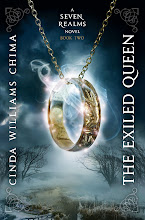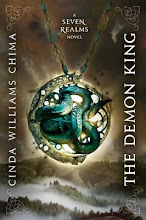Q: Point of view is one of those important "rules" of writing. My editor and other writers I know treat it like a cardinal sin to change perspective. My understanding is that an author writing in 3rd person maintains telling the story through the main character's eyes. I notice that you write scenes that do not involve your main character and even get inside the thoughts and emotions of secondary characters. I wonder if it was a conscious decision of yours, and if anyone discouraged you from this?
A: Those of us who have studied craft read differently than other people. We are often thrown right out of the story when we stumble across apparent violations of the “rules” that the pleasure reader would never notice.
You are doing your job as a writer—you have read the rules, you have studied craft—and now you are analyzing work by other writers to see whether they are following the rules and, more importantly, what works and what doesn’t.
The advantage of being able to change viewpoints is that the writer can deliver all the action in scene and in a very direct way, and not have to resort to awkward stratagems like having one person telling another what happened when the viewpoint character was offstage.
The standard point-of-view rule is that you can use more than one POV in a novel, but only one in a scene or chapter. In other words, you can't jump from head to head within a scene, but you can go to another character's POV after you take a break.
That said, I see violations of this rule all the time, in bestselling books from popular authors. Who do they think they are? And why don’t they have to follow the rules?
In writing commercial fiction, the final arbiter is the reading audience. Does it work, or is it distracting? Does it serve the story or interfere? Does it keep the reader at arm’s length or draw him in? Is it confusing? If readers have to stop and reread paragraphs in order to follow the story and know whose head they’re in, they are likely to put it down.
There are other drawbacks to having multiple POVs—you want readers to connect and identify with your characters and they can't if you don't spend much time with any one. So it's best to stick to one or two viewpoints. If you introduce a new viewpoint character, it should be for a good reason.
The first two Heir Chronicles books are each primarily from one POV, with a few exceptions that enabled me to present important events onstage. The last book is more of an ensemble cast, made up of characters from the previous books, with multiple viewpoints. Some readers loved this, others complained (mostly because their favorite character wasn’t on stage long enough.)
You asked whether I had been discouraged from using multiple viewpoints. In my upcoming novel, The Demon King, the viewpoint generally alternates chapter by chapter between two main viewpoint characters—Han Alister, a streetgang leader, and Raisa ana’Marianna, a rebellious princess. There are two chapters from the viewpoint of Amon Byrne, a cadet in the Queen’s Guard. My editor questioned whether this was necessary, since it departed from the pattern. I thought hard about it, and decided that the needs of the story were best met by using the third viewpoint. My editor agreed.













1 comment:
My experience was somewhat similar to the questioner's. I studied the rules, looked for them applied in my favorite books, and found those rules repeatedly broken. And, in my own writing, it often sounds better when the rules are broken. So I keep the rules in mind, but I'm not afraid to break them if it sounds better.
Post a Comment